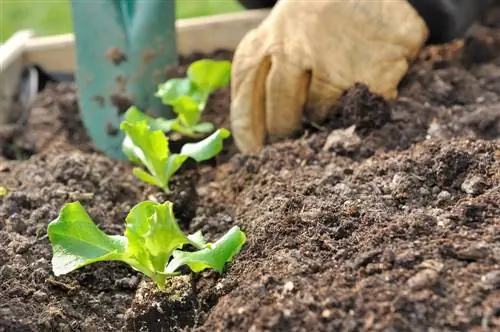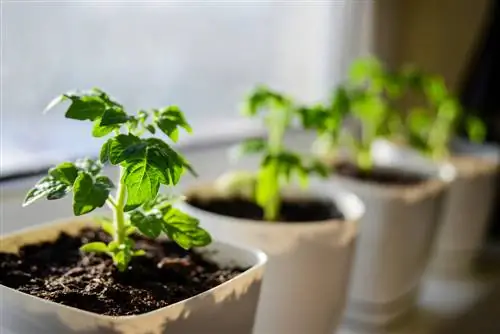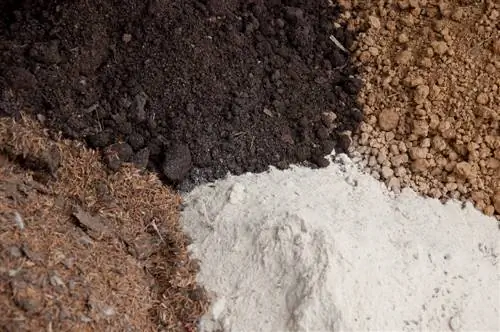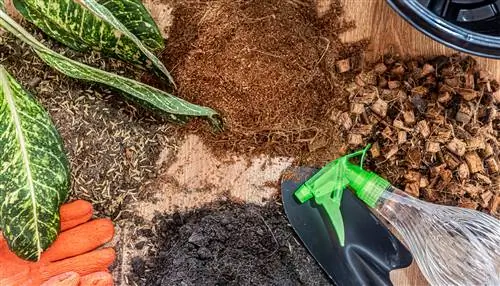- Author admin [email protected].
- Public 2023-12-16 16:46.
- Last modified 2025-01-23 11:22.
In the vegetable garden, the right potting soil stimulates growth and guarantees a rich harvest. Pure compost soil is just as unsuitable for this purpose as expensive potting soil. This guide gets to the heart of what good potting soil for vegetables is made of.
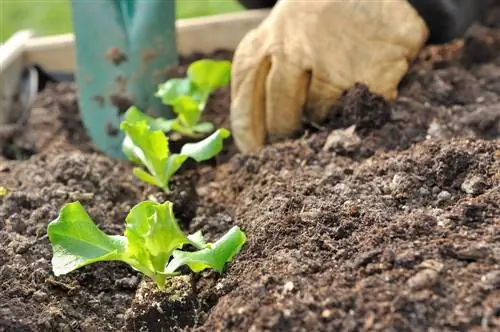
What is the best potting soil for vegetables?
The ideal potting soil for vegetables consists of a mixture of garden soil (topsoil), mature compost and additives such as sand or fine-grained grit. Coconut soil can be added as an ecological peat substitute to improve the soil's water holding capacity.
The right mixture makes the difference
If you ask an experienced vegetable gardener about his secret to success, he will first mention the quality of his potting soil. Vegetable plants need nutrient-rich, well-drained soil, full of busy microorganisms. The following mixture has proven to be excellent in private vegetable gardens:
- Garden soil, also known as topsoil
- Ripe compost from our own production
- Aggregates, tailored to the local conditions
Valuable topsoil forms the foundation for every ornamental and vegetable garden. The garden soil is usually filled up after a new building or as part of garden design. With mature compost soil you can enrich existing garden soil with all the important nutrients that vegetable plants want. Top soil that has a lot of loam or clay can be given the necessary permeability using sand or fine-grained chippings as additives.
Coconut soil as a peat substitute
Coconut soil is on the rise as an ecologically sensible addition to vegetable soil as a peat substitute. Good planting soil for vegetables should soak up water from irrigation or rain, like a sponge. The moisture is then gradually released to the roots without causing waterlogging. For many decades, peat fulfilled this task as the main component of potting and plant soil.
Natural, environmentally conscious hobby gardeners have banned peat from their vegetable gardens because living moor areas are destroyed for mining. It has long been found that the shell fibers of coconuts fulfill the functions of peat just as well.
Coconut clay is available commercially in pressed brick form (€38.00 on Amazon). Dissolve a humus brick in lukewarm water. Since the coconut fibers contain no nutrients, fertilize the water with a liquid vegetable fertilizer. Mix equal parts of the coconut soil with garden soil and compost - the perfect potting soil for your vegetables is ready.
Tip
When you prepare the bed for your valuable strawberry plants, please leave home-made garden compost aside. A lot of s alt and lime have accumulated during the rotting process, which your strawberries don't like at all. Good planting soil for strawberries consists of garden soil, leaf compost or bark humus as well as a few handfuls of horn meal.

